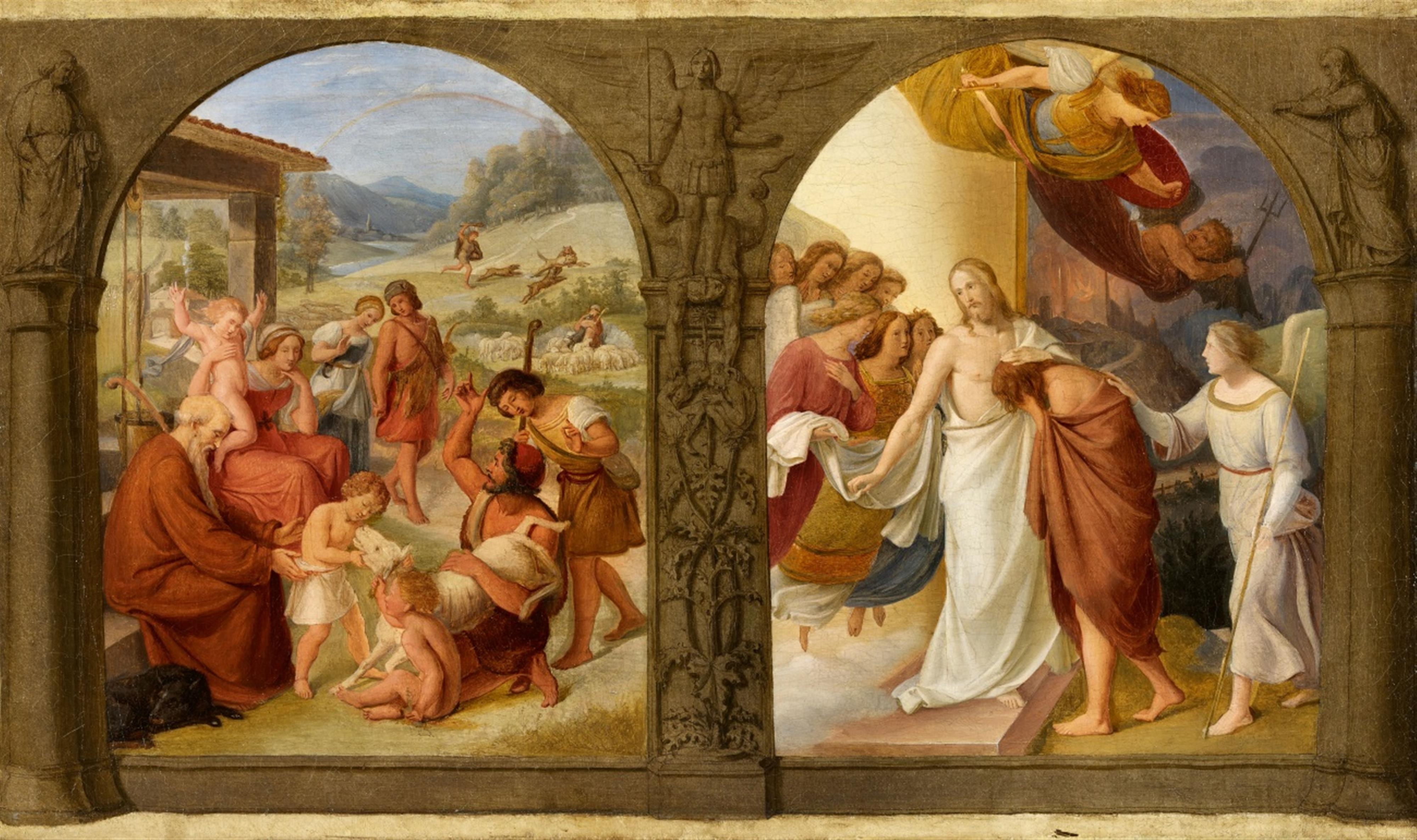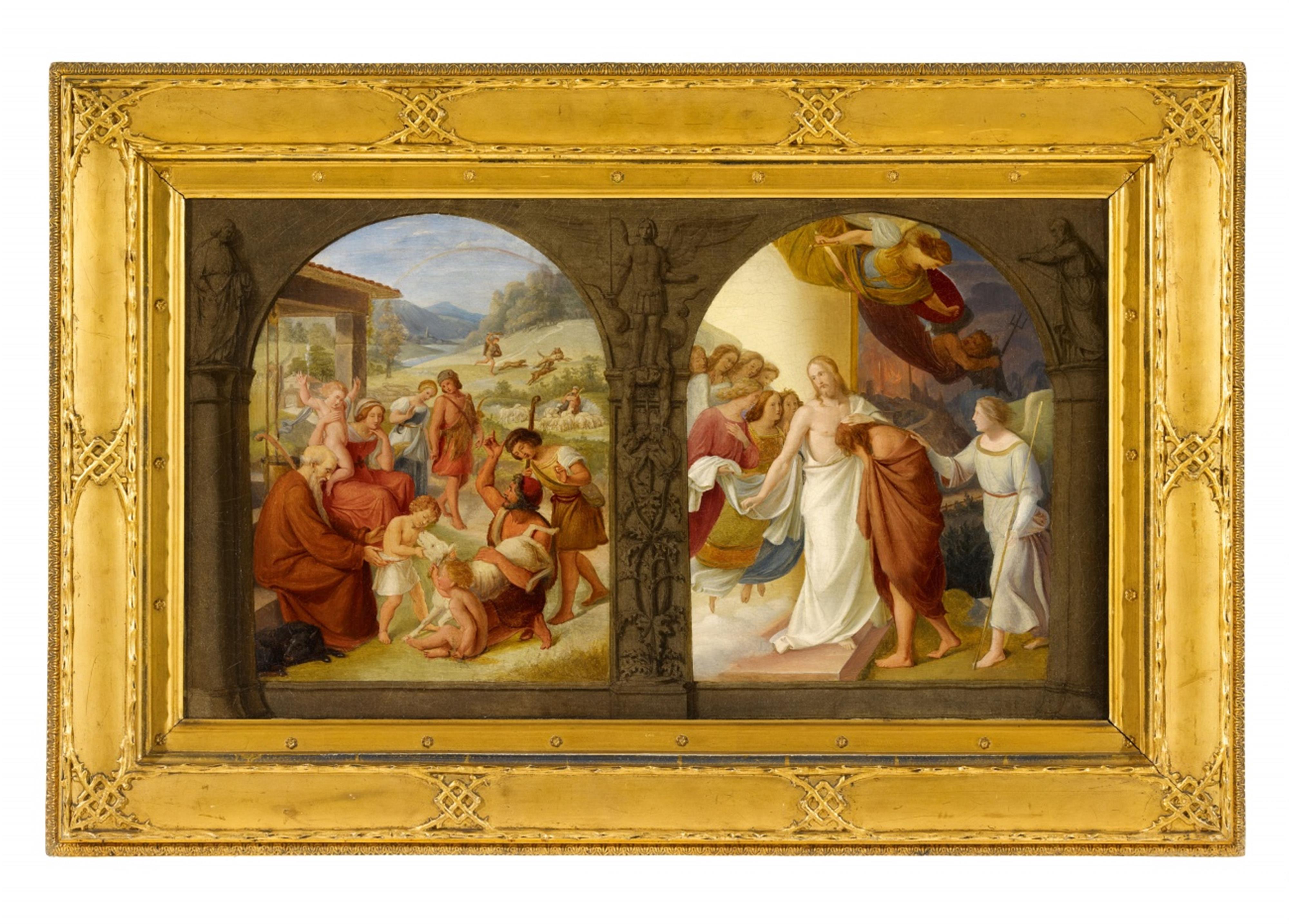Wilhelm von Schadow
The Parables of the Lost Sheep and the Prodigal Son
Oil on canvas. 39 x 66.5 cm.
Wilhelm von Schadow was one of the leading painters of the Nazarene movement, and later had a major influence on the development of painting in Germany as Director of the Düsseldorf Academy. He received his initial training under his father, the famous sculptor Johann Gottfried Schadow, before beginning his studies at the Berlin Academy in 1808. Schadow resided in Rome from 1811 to 1819, where he joined the Brotherhood of St. Luke in 1813. This organisation had been founded four years before and formed the starting point of the Nazarene Movement. Shortly after his return to Germany, Schadow was appointed Professor at the Berlin Academy in 1819 and he became Director of the Düsseldorf Academy in 1826.
In her 2006 expertise, Cordula Grewe describes this work as “the only known example of one of Friedrich Wilhelm von Schadow's most significant late works”. The story of the work's creation, spanning over 30 years, is “of great importance for the understanding of Schadow's artistic development and creative process." The artist first attempted the topic of the Lost Sheep and the Prodigal Son during his time in Rome, but left the unfinished painting behind in the city when he returned to Berlin. He must have brought the cartoons for the work with him, as they were exhibited at the Berlin Academy a year later, although the whereabouts of these pieces are now unknown. Schadow returned to the topic one year later, but this attempt failed once again. Twenty-four years were to pass before Schadow was able to complete a large format work in oils addressing this subject. The piece was commissioned by the Russian Crown Prince and later Tsar Alexander II (1818-1888). Schadow worked on the piece from 1841-1845, ordering a formidably sized white grounded canvas measuring 190 x 330 cm. He completed the work in July 1845 and it was exhibited in Brussels before its transferal to the collection of the Russian Prince.
Cordula Grewe assumes the present version to be contemporaneous to the large version for the Russian prince. Schadow frequently created several versions of the same piece, for example also for his most famous image “The Holy Family beneath the Portico”, which he first painted for King Ludwig I of Bavaria, and then for King Frederick William III of Prussia. Cordula Grewe views the dimensions and detailed finish of this piece as indications that it was not intended as a study for the larger work but, like the two pieces painted for the Kings of Prussia and Bavaria, as a painting in its own right. The care and attention to detail expended on the design of the frame in which the work is housed lends further weight to this assumption. Its ornamentation echoes the motif of entwined, thorny branches found in the central pilaster that separates both sides of the image.
Certificate
Prof. Dr. Cordula Grewe, Princeton, 24.10.2006
Provenance
Auctioned by Fischer, Lucerne, 1.-6.5.2005, lot 1228. - Continental private collection.




